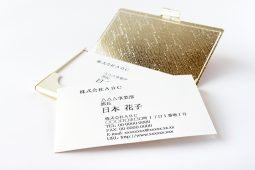It turns out there’s a bit more to talking to people at work than one article can cover. I know, I wish there wasn’t, but since it’s things you might need to know, we might as well cover it.
First of all, don’t worry too much; if you’re in Japan but not Japanese, socially, people don’t really expect you to keep up perfectly. You can live here for 20 years and this will still be the case (well, unless something major changes here in the next 20 years). Missing one of these cues is not the end of the world. With that said, let’s run through a few things.
Bows: There are many, many rules for how to vary your bow according to exact circumstances, and this is separate from company policy in retail and catering for how to bow to customers. I, having lived here pretty much all my life, don’t know the rules, and I doubt most Japanese people my age do either. Keep it simple, bend at the waist and call it a day. The effect you’re going for here is “well, at least they tried”. Good news, though, that’s enough to keep just about anybody happy.
Yes and No: Generally, in Japan — though this is fading away a little in younger generations — it’s considered rude to say no outright, while yes doesn’t necessarily mean what you think it does.It’s not that you’re not allowed to say things (though there’s a bit of that too depending on relative status), but that saying it without couching it in some vagueness and making the listener put it together themselves is considered rude.
A lot of writers in a rush to mystify Japan have talked about how this is uniquely Japanese, and no, it really isn’t; most of the world has a lot of this and could probably stand to have less, but it’s true that Japan does have a more intense case of it (and a lot of it is built into the language). Reading between the lines is something that takes a lot of practice, socialisation, and skill with the language; I can’t really cover all of it here, but let’s get the very basics here.
You will almost never hear ‘no’. You will frequently hear ‘sore wa chotto…’ (‘that’s a little…’), or be told that something is ‘muzukashii’, that is, ‘difficult’. This is at worst a firm no, and at best telling you they would really rather not do this, and hope you’ll take the hint. Abruptly changing the subject and hoping you don’t question it, or sucking air through their teeth are some other ways people will try to, again, hint that you should drop this. Do what you will with the information, but it’s good to know what’s actually meant.
Meanwhile, ‘hai’, or ‘yes’, is actually more of a filler word.It means the person saying this understood you, and is paying attention, rather than necessarily implying agreement. Actual, final agreement is likely to be a bit more elaborate and explicit. Nothing rude about saying yes to someone directly, after all.
Body language: Don’t touch anyone. Just don’t. Personally this suits me just fine, but I can see how it might be jarring for some people. Stick to it, though, even in non-work settings. Eye contact is fine but don’t keep it up for too long at a time. Don’t point at people if you can help it; if you need to indicate someone or something, do so with a flat hand, sweep of your arm, etc. Honestly, a lot of this is standard around much of the world as far as I can tell; the question is more in how rude it’s considered in Japan.
Extrapolation: A lot is made of the way you’re meant to interpret what’s been said to you so nobody has to say what they mean outright. Unfortunately this falls apart completely if you haven’t, say, lived in Japan all your life. If you can actually do this, great, but as an outsider, nobody is going to be that upset if you (politely) ask for clarification on their position — in doing this, you’ll be signaling that being more straightforward will not be considered rude, which will hopefully help.
Meetings: Look, at the time of writing, it doesn’t seem like people are going to be meeting in offices for a very long time still, but we might as well go over this. In much of the west, meetings are either for a handful of people to give you new information, or to come up with ideas together (but office politics probably decide whose ideas are taken up). In Japan it’s largely a consensus-building exercise, however artificially: The idea is that at the end of the meeting, or series of meetings, officially speaking, everybody is on the same page opinion-wise. This may well be because everyone who disagrees realises it would be rude to say so.
…So they’re not that different, actually. Just go in, keep your head down, nod along and hope that what comes out of it isn’t anything bad.
Tone: As a kind of catch-all from general tone to honourifics (which go from a neutral-to-informal lack of one, to the polite but basically neutral ‘san’, to the highly formal/reverent ‘sama’ for anyone you are treating as above you; last one probably sounds weird outside text), it’s good to let the other person go first and then, assuming you’re on roughly even social footing, proceed the same way. This is partly because there’s no such thing as a universal company culture — my work emails alone look very, very different depending on which company I’m getting it from. Let them go first, although it’s hard to go wrong by erring on the side of formality so long as you don’t use an excessive ‘sama’ or something. People aren’t very likely to object to the rules they set themselves, and chances are, they know what’s happening here better than you do.
Most articles should be taken with a grain of salt, since I’ve noticed a bad habit of trying to mystify, generalise or exaggerate Japan in a lot of them. That said, this article is written by someone who handles most of their work with emails, so it’s no exception, just in a different way. My point is: This is day 1 material. Do your research, but erring on the side of caution is probably the best general advice, and once you’ve been in your particular work environment for a little while, you’ll know more about your specific setting than most of what you can read online.
Good luck!








